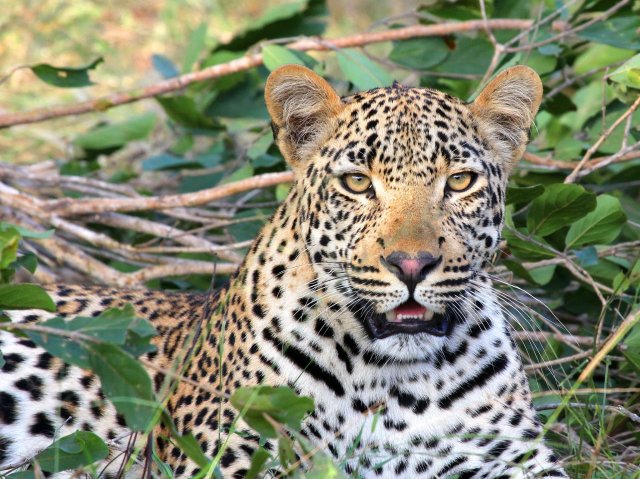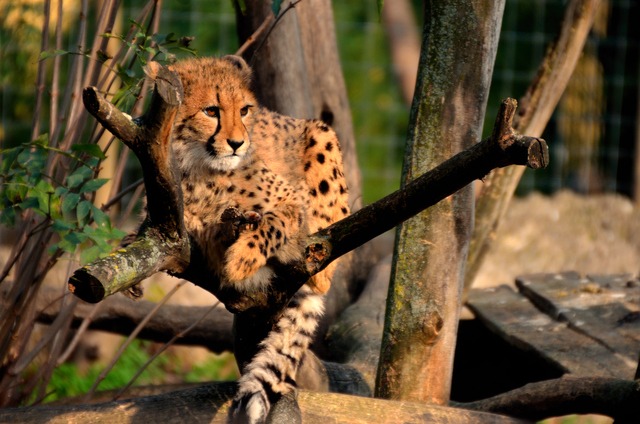What Are the Main Threats to the Survival of Leopards?
Survival of Leopards
Leopards, known for their stunning beauty and elusive nature, are one of the most iconic big cats in the world. However, their survival is under serious threat due to various factors. In this article, we will explore the main threats that leopards face and the implications for their long-term survival.
Habitat Loss and Fragmentation
One of the primary threats to leopard populations is habitat loss and fragmentation. As human populations expand and encroach upon natural habitats, leopard habitats are being destroyed at an alarming rate. Deforestation, urbanization, and the conversion of land for agriculture are all contributing to the loss of suitable leopard habitats.
When leopard habitats are fragmented, it becomes increasingly difficult for these big cats to find suitable prey and mates. Fragmentation also leads to increased human-leopard conflict as leopards are forced to venture into human settlements in search of food and shelter.
Poaching and Illegal Wildlife Trade
Survival of Leopards: Poaching and the illegal wildlife trade pose a significant threat to leopard populations. Leopards are highly sought after for their beautiful fur, which is used in the fashion industry. Their bones, teeth, and other body parts are also used in traditional medicine and as decorative items.
According to a report by the Wildlife Conservation Society, between 2000 and 2014, over 4,900 leopards were seized from illegal trade across 30 countries. This number is likely just the tip of the iceberg, as many illegal wildlife trade activities go undetected.
Human-Leopard Conflict
Survival of Leopards: As human populations expand and encroach upon leopard habitats, conflicts between humans and leopards become more frequent. Leopards are often blamed for attacks on livestock, and in some cases, even on humans. This leads to retaliatory killings, where leopards are hunted or poisoned in an attempt to protect human interests.
For example, in India, where leopard populations are relatively high, there have been numerous cases of human-leopard conflict. In response, conservation organizations have implemented measures such as building predator-proof enclosures for livestock and raising awareness among local communities to reduce conflict and promote coexistence.
Loss of Prey
Survival of Leopards: Leopards are apex predators and play a crucial role in maintaining the balance of ecosystems. However, the loss of prey species due to habitat destruction and poaching has a direct impact on leopard populations. When prey populations decline, leopards are forced to search for alternative food sources, often leading them into conflict with humans.
For example, in parts of Africa, the decline of antelope populations due to poaching has resulted in leopards preying on livestock, leading to increased conflict with local communities. Protecting and restoring prey populations is essential for the long-term survival of leopards.
Climate Change
Climate change is another significant threat to leopard populations. Rising temperatures, changing rainfall patterns, and the loss of suitable habitats due to sea-level rise all have a direct impact on leopard populations.
A study published in the journal Nature Climate Change found that climate change could lead to a significant reduction in leopard habitats by 2050. This loss of habitat, combined with other threats, could push leopard populations to the brink of extinction.
Conservation Efforts
Despite the numerous threats facing leopards, there are ongoing conservation efforts aimed at protecting these magnificent creatures. Governments, NGOs, and local communities are working together to implement measures such as protected areas, anti-poaching patrols, and community-based conservation initiatives.
For example, in South Africa, the Cape Leopard Trust is working to conserve the Cape leopard population through research, education, and community engagement. Their efforts have led to increased awareness and support for leopard conservation in the region.
Conclusion
Survival of Leopards: Leopards are facing a multitude of threats that are pushing them towards the brink of extinction. Habitat loss and fragmentation, poaching and illegal wildlife trade, human-leopard conflict, loss of prey, and climate change are all contributing to the decline of leopard populations worldwide.
However, through concerted conservation efforts and the involvement of local communities, there is hope for the survival of these magnificent big cats. Protecting and restoring leopard habitats, combating poaching and illegal wildlife trade, promoting coexistence between humans and leopards, and addressing the impacts of climate change are all crucial steps towards securing a future for leopards in the wild.
Read More About Leopards From Wikipedia





